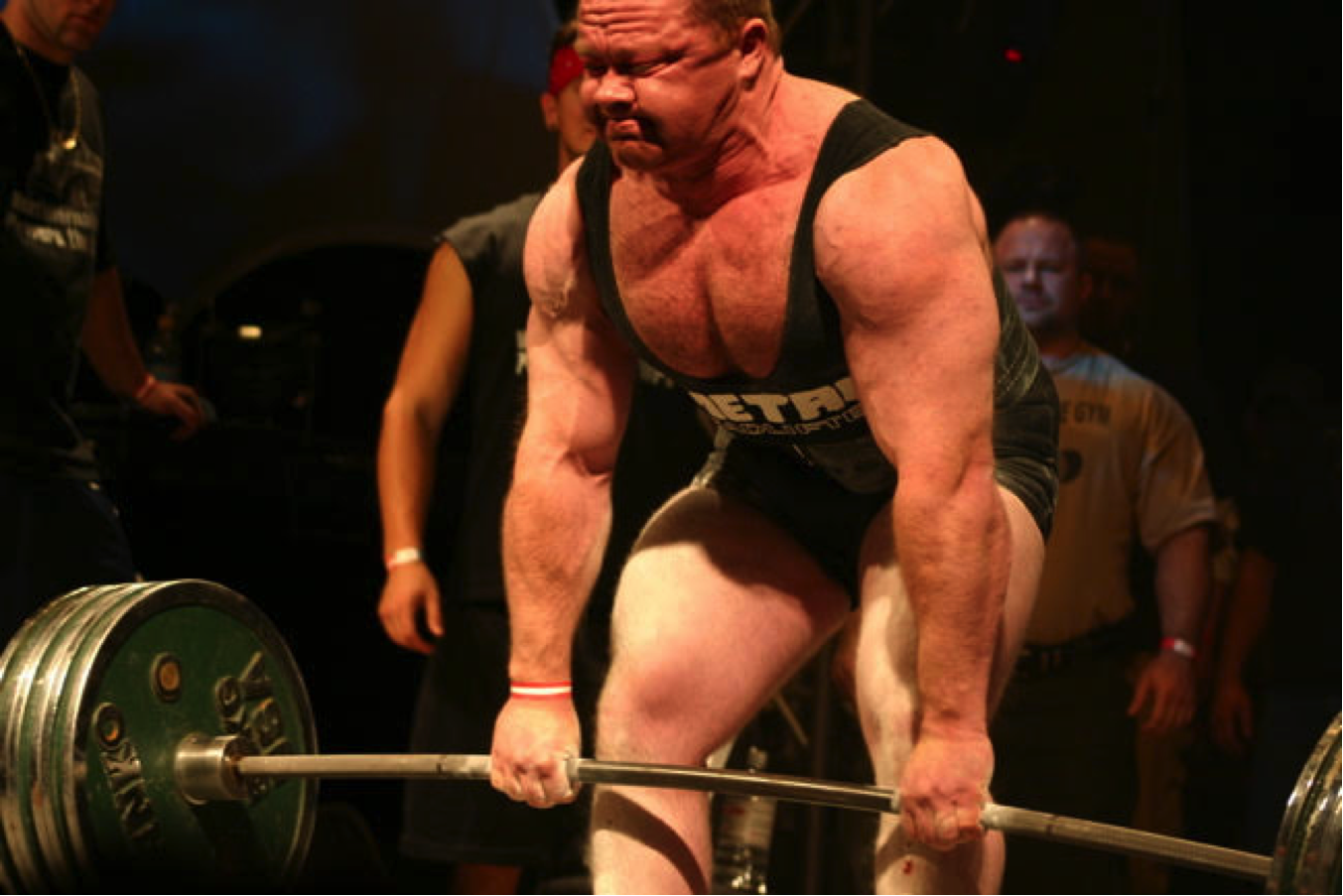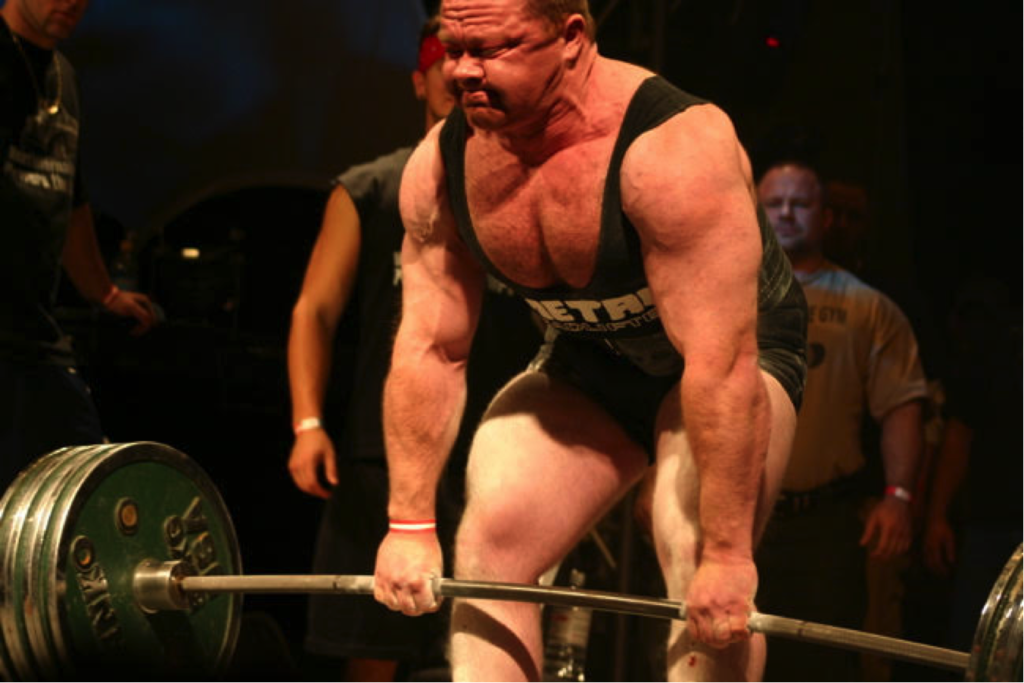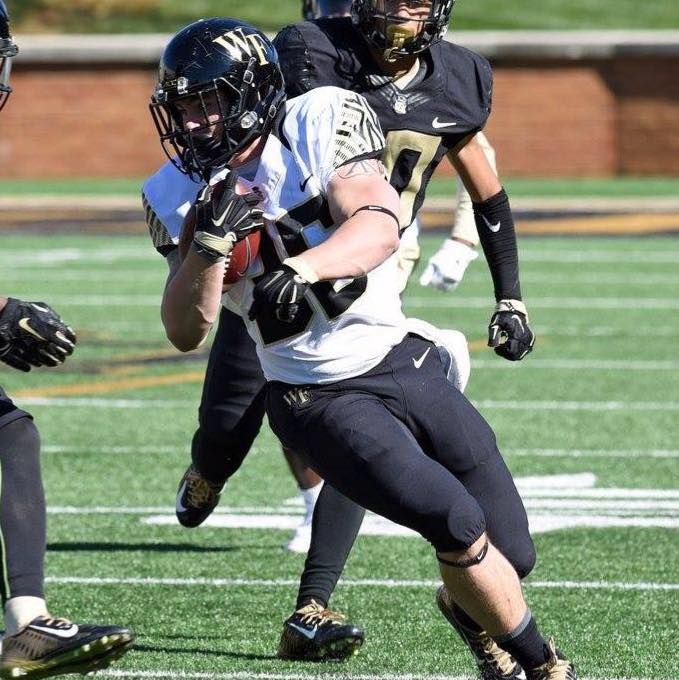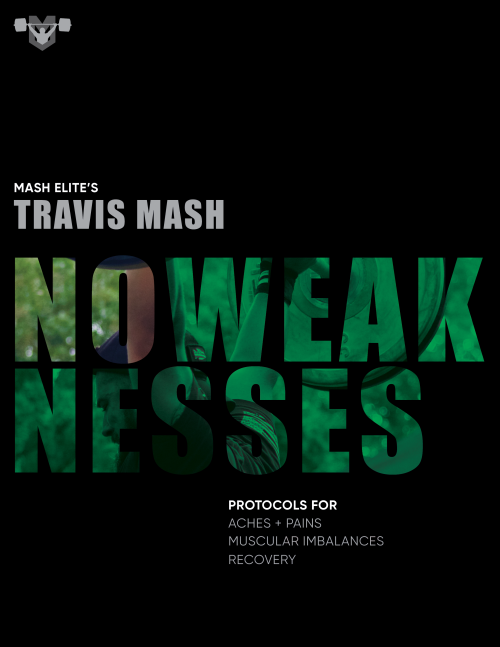Bullet Proofing with No Weaknesses
Well I am excited to announce that today we are launching our latest book “No Weaknesses” to the world. This book has taken our team over one year to finish because I wanted to deliver the perfect bulletproofing tool to all of you. I believe that’s exactly what we’ve done.
However this article isn’t going to be one massive plug for the book. I can’t do that. My writing has always been and always will be all about you the reader, so we are going to talk about the keys to balancing and stabilizing (bulletproofing) your body. I want all of you to have a lifetime of fitness, PRs, and fun in the gym. Over the last 32-years of my training life, I have learned a lot about staying in the game. One of my biggest goals is to teach all of you, so that you can avoid the torn quads, protruding lumbar discs, fractured cervical vertebra, torn supraspinatus, and destroyed hips.

I wouldn’t change my life one bit other than the fact that I wish I had known a little better how to take care of my body. However, maybe God intended that I go through this to help all of you. If so, I am totally cool with that. There is nothing more joyful on earth than to help someone reach a goal or improve his or her life. I will take the beating to provide for all of you guys and gals.
Before I dive deeper into this article, let me be straight with you. There is no way on earth to completely prevent injuries. There are only methods to decrease the risks. I want all of you to know the methods to decrease the risk of injuries to yourself and/or athletes.
1. Consider the Sport- This one is easy, and uses a little bit of common sense. If you play football, it’s probably wise to protect the neck. If you play soccer, protect the neck and knees. If you do weightlifting, it’s wise to protect the back, shoulders, knees, and hips. It’s that easy. Look at what you’re doing and consider the things that you are doing on a daily basis.
If there is something repetitive like weightlifting, you will want to stabilize the joint that is being overworked. If your sport commonly has you making a collision or receiving a blow like football or MMA, then you have to protect the entire spine, neck, and head. It’s that simple.
2. Quantify a Weakness and Attack It- There are a few ways to go about this process. Louie Simmons uses his accessory work to target weaknesses. For example he uses the belt squat to target and pinpoint hip weaknesses. He uses the Inverse Leg Curl to show hamstring weakness especially as they cross the knee. He uses the Reverse Hyper to show low back weakness and to strengthen that low back.
We use assistance movements as well to pinpoint weaknesses, but we also use a tool that’s in the “No Weaknesses” e-book. It’s a test of several movements and exercises compared against one another. “The Tool”, we’ll call it, will then spit out ratios letting the athletes know where they are weak, and where they are strong. Not only will it tell them where they are weak and strong, it will tell them a ratio to quantify the amount. This is also important when addressing the weaknesses. You will also be able to quantify the amount of improvement.
Obviously when you’ve targeted a weakness, you need to attack it. I recommend, spending 30-50% of your time on attacking the identified weaknesses. When you strengthen the weaknesses, your body will be more stable, more efficient, and more durable. It’s like aligning the tires of a car. The wear and tear on the body will be much less if everything is balanced and strong.
3. Understand the Kinetic Chain- It starts from the ground up. Your feet need to be stable. Your ankles need to be mobile. Your knees must be stable, hips mobile, lumber spine stable, thoracic spine mobile, and cervical spine stable. You get the picture. If the foot gets weak, then the ankles try to stabilize, causing the knees to get weak, and so on. This is why it’s a good idea to do some training barefoot. One thing that I can tell you that I like to do with most people are carries performed barefoot. We have turf outside, so it makes for a great place to perform this movement.
4. Get Your Recovery on Point- I preach this all the time, but I’m not sure that everyone gets it. Here’s the deal. If your sleeping sucks, so will you. If your nutrition sucks, so will you. People are all the time telling me that they train like a boss, but they don’t have time to sleep. That tells me that the person will receive moderate results. He or she can get better, but they are still selling themselves short.
If you don’t have a soft-tissue expert on your team, then you aren’t going to succeed. That’s it! Point blank! Dr. Gray from Gray CSA and Sports Associates was my go to expert on all aspects of my body. He traveled to my competitions with me. Heck we became so close that he was in my wedding. That’s the relationship that you are going to need with your practitioner as well.
5. Joint Distraction and Manipulation- If you have areas that are giving you problems with mobility and moderate pain, using a band to distract the joint will help with mobility. Personally I believe that athletes get carried away with this. I watch athletes walk into the gym and takes bands to every part of their body. They’re either OCD, or they need to go to the Emergency Room with all of those issues.
My hips are my trouble spot. I like to come in the gym, attach one end of the band to the power rack and one to my hip, and then do a series of mobility exercises to open the hip up. There are several exercises for the shoulders, ankles, and thoracic spine that will help with common aches and mobility issues.
We added all of our favorite exercises to the “No Weaknesses” E-Book. Teaching athletes to deal with the common aches and pains of training is a big part of coaching. I have news for all of you. If you are going to be an athlete, you are going to deal with some aches and pains. That’s part of practicing a sport day in and day out. I promise that it’s all worth it. In the long run dealing with a few aches and pains in training will lead to a lot less aches and pains the older you get.
I hope that this article helps all of you bulletproof your bodies, so that you can all crush your goals and dreams. Remember everyone does the big things like training hard in the gym. However, the champions do the little things to one-day end up on top. Whether you are into general fitness or you want to be the strongest man or woman on earth, this whole thing is a marathon not a sprint.
Guys and gals, if you want a tool that will help you along your fitness path, I would be honored if you checked out the brand new “No Weaknesses” E-Book. For more information, click on the link below:



Pingback: The New Age of Hybrid Programs: Thoughts on Combining Powerlifting, Weightlifting & Bodybuilding – Mash Elite Performance